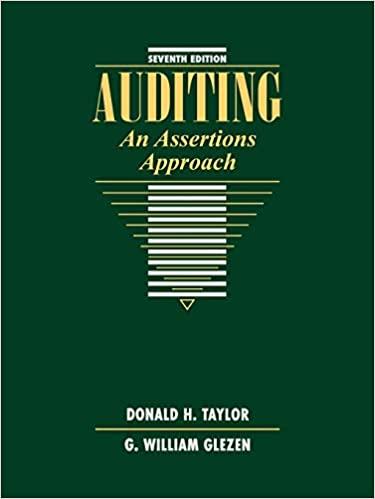In 19X4 XY Company purchased more than ($ 10) million of office equipment under its special ordering
Question:
In 19X4 XY Company purchased more than \(\$ 10\) million of office equipment under its "special" ordering system, with individual orders ranging from \(\$ 5,000\) to \(\$ 30,000\). "Special" orders entail low-volume items that have been included in an authorized user's budget. Department heads include in their annual budget requests the types of equipment and their estimated cost. The budget, which limits the types and dollar amounts of office equipment a department head can requisition, is approved at the beginning of the year by the board of directors. Department heads prepare a purchase requisition form for equipment and forward the requisition to the purchasing department. XY's "special" ordering system functions as follows:
Purchasing: Upon receiving a purchase requisition, one of five buyers verifies that the person requesting the equipment is a department head. The buyer then selects the appropriate vendor by searching the various vendor catalogs on file. The buyer then phones the vendor, requesting a price quotation, and gives the vendor a verbal order. A prenumbered purchase order is then processed with the original sent to the vendor, a copy to the department head, a copy to receiving, a copy to accounts payable, and a copy filed in the open requisition file. When the buyer is orally informed by the receiving department that the item has been received, the buyer transfers the purchase order from the unfilled file to the filled file. Once a month the buyer reviews the unfilled file to follow up and expedite open orders.
Receiving: The receiving department receives a copy of the purchase order. When equipment is received, the receiving clerk stamps the purchase order with the date received, and. if applicable, in red pen prints any differences between quantity on the purchase order and quantity received. The receiving clerk forwards the stamped purchase order and equipment to the requisitioning department head and orally notifies the purchasing department.
Accounts payable: Upon receipt of a purchase order, the accounts payable clerk files the purchase order in the open purchase order file. When a vendor invoice is received, the invoice is matched with the applicable purchase order, and a payable is set up by debiting the equipment account of the department requesting the items. Unpaid invoices are filed by the due date, and, at the due date, a check is prepared. The invoice and purchase order are filed by purchase order number in a paid invoice file, and then the check is forwarded to the treasurer for signature.
Treasurer: Checks received daily from the accounts payable department are sorted into two groups: those over \(\$ 10,000\) and those \(\$ 10,000\) and less. Checks for \(\$ 10,000\) and less are machine-signed. The cashier maintains the key and signature plate to the check-signing machine and maintains a record of usage of the check-signing machine. All checks over \(\$ 10,000\) are signed by the treasurer or the controller.
Required:
a. Identify the sections of the narrative that describe aspects of the control environment for XY Company. What effect, if any, would these aspects of the control environment have on XY Company's accounting system and control activities relating to purchasing, receiving, accounts payable, and treasurer?
b. Identify the financial statement assertions for specific accounts covered by the narrative. For each assertion, identify potential misstatements that could occur in the financial statements.
c. Identify the control activities in the narrative that relate to each of the financial statement assertions in
(b) above. Indicate in what way the control activities might prevent or detect these potential misstatements.
Step by Step Answer:

Auditing An Assertions Approach
ISBN: 9780471134213
7th Edition
Authors: G. William Glezen, Donald H. Taylor





